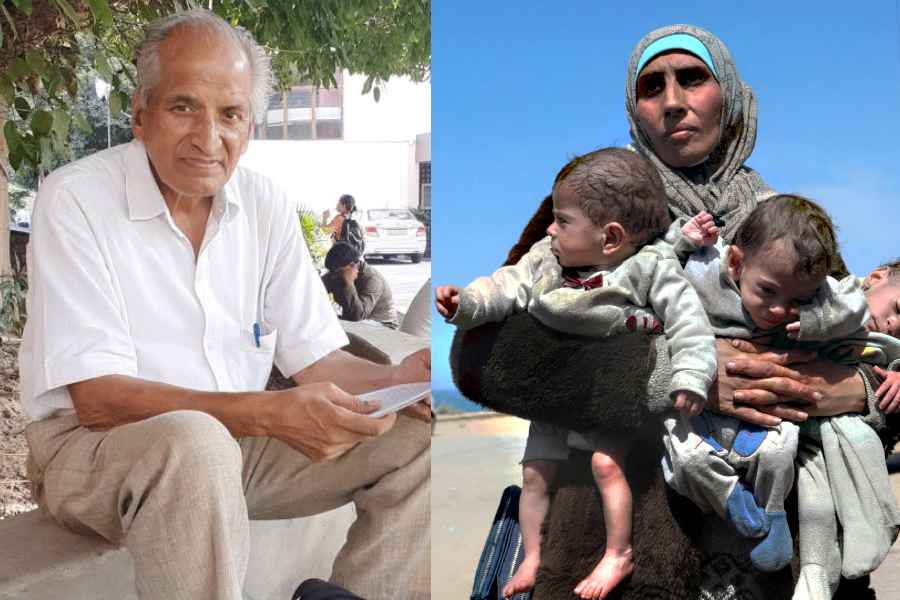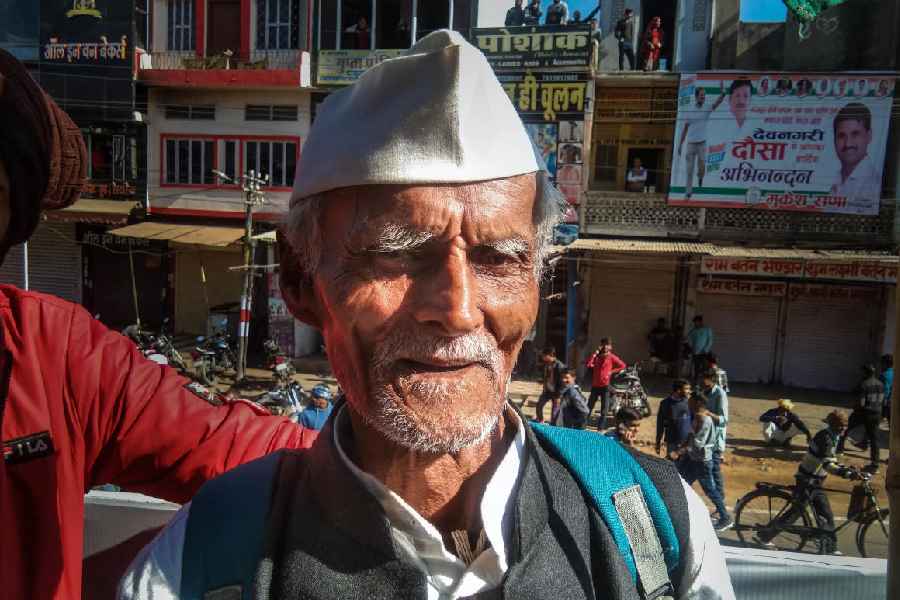 |
 |
 |
 |
 |
| (From above): Mannequins pretty up a storefront in Malmo’s famed shopping district; a view of the Town Hall; tattoos are very popular with the locals;a statue of King Karl X Gustav at Stortorget; the Turning Torso building is a big hit with tourists |
As the ‘fasten seatbelts’ sign went on, signalling our arrival at Copenhagen, passengers began peering out of the windows to catch a glimpse from the skies of Scandinavia’s newest engineering marvel, the Oresund Bridge. And with good reason. From the air it’s certainly awesome — a gigantic stretch of road held on shining steel pillars that suddenly emerges out of the sea. When Sweden’s King Carl Gustav and Denmark’s Queen Margrethe threw open this bridge that links Copenhagen with Sweden’s third largest city Malmo in 2000, it created waves across Europe.
Malmo wasn’t on our itinerary, but as we touched down at Copenhagen airport, we made up our minds to visit the city just for the thrill of going over this bridge — said to be linking the two nations together for the first time since the Ice Ages. The bridge was said to be a combination of the best of Swedish design, a country that gave Ikea to the world, and Danish engineering skills. At the Danish end, the bridge is submerged undersea. From the skies, it looks as though the bridge just stops in the middle.
Getting to Malmo turned out to be easier than we’d reckoned. We used the same train and bus pass that we were using in Copenhagen. Since there was a bus to Malmo every hour from just outside our hotel, we hopped into one.
Within no time we were speeding past the airport road, past the docks and entering the brightly-lit, 4-km submerged tunnel. When we climbed up and emerged into the open, we were in for a bit of disappointment. It was raining and the sea on either side looked murky.
And although there was not much boat traffic to gawp at (the yachts and other craft on the Oresund Strait usually make for a pretty sight), we could certainly appreciate the bridge’s engineering. A rail line runs under the four lane road, which we were speeding along, and part of the way the road goes over an artificial island called Peberholm, specially created for this project. As it started raining more heavily, we were glad that the bus was centrally heated. The sea winds can be blustery and unpleasant.
By the time, we’d crossed the sea and reached Malmo — the whole journey just took 35 minutes and the weather had cleared. The bus goes up to Malmo Central station, from where many of the city tours start, but we choose to get down earlier, to explore the place by foot. But first, we had to change our Danish krones into the Swedish krona. Both the countries are yet to adopt the Euro, and while the bridge might’ve linked the two cities, the neighbouring currency is not accepted at either end.
The guidebooks had said that Malmo was a shopping paradise, with even the Danes coming over here to shop till they drop. Indeed, the first things we saw were huge retail showrooms and trendy malls that dominated the street. All the American fast food chains had opened here. We stopped for breakfast at a café lining one of the cobbled sidelanes, gazing with interest at the shoppers and the tall, blond locals — many of whom sported tattoos. The Viking motif so evident all over Copenhagen could be seen at all the souvenir shops here too — the only difference being the Danish Viking helmets were in red while the Swedes preferred blue and yellow.
Our next stop was the charming Lila Torget (Little Square) to admire the flowers and fruits being sold on the streets. To our shock, the dry fruit vendor suddenly started speaking in Hindi, urging us to buy pistachios.
Further ahead, we dawdled at Stortorget, Malmo’s biggest city square. Constructed in 1536 by Jörgen Kock, who was a mayor of Malmo, the square is dominated by the Renaissance- style Town Hall. In the middle of the square is an equestrian statue of King Karl X Gustav, whose chief claim to fame was that he snatched the city from the Danes in 1658. For centuries, Malmo kept going back and forth between the Swedes and the Danes. The other point of interest in this square is the water fountain, at the tip of which is a nightingale.
At the station, which is on the banks of a canal, we found people queuing up for the boat cruise. With gaily packed picnic hampers complete with wine and cakes, it looked inviting and we climbed aboard. It was certainly a soothing way of seeing the city, with the guide’s singsong voice describing the history of the charming old buildings lining the canal. Malmo’s buildings are a quaint mix of the old and modern.
As our boat rounded the unprepossessing docks with a slew of industries in the background and entered into the harbour, the Turning Torso shot into view. This is a spectacular building, which looks as though several cubes have been fitted in haphazardly so that the whole building looks twisted. A sort of modern day Leaning Tower of Pisa. Fifty-four storeys high, this is said to be Sweden’s tallest building and has been crafted by Santiago Calatrava. Certainly the Swedes did seem to display a zany sense of design.
Other notable sights included a quaint old wooden windmill, several beautiful gardens, a museum and the old jail. We also cruised past some of the shopping squares that we’d covered by foot earlier in the day. From the guide, we also learnt that Malmo had plenty of art, culture and design and that no less a person than Ingmar Bergman used to be director and advisor at Malmo’s municipal theatre.
By the time, we got off the boat, it was 3pm. We still had three hours to kill before catching the bus back to Copenhagen so we headed towards the beach. “It’s just a 15 minute walk from here,” someone told us helpfully. The 15-minute walk though proved to be more like 45 minutes. The Swedes seem to have the same estimates of our walking speeds as the hill people in India. All of a sudden however, we caught sight of the sea, beyond a vast expanse of rolling fields of grass. The kids took one look and fatigue forgotten, raced to fling themselves on the springy grass. Indeed, the grass looked more inviting than the beach, which was empty save for a few dogs cavorting in the sea with their owners.
The reason became clear when the young girl who was throwing a toy for her dog to fetch from the sea explained that this stretch of the beach was reserved for dogs. Ribersborg, the popular beach, was further down.
Looking up at the grey sky we decided to forget about the beach and went back to the café on the greens. While we enjoyed our tea and the view of the waters, the kids admired the ducks and geese and played on the swings. Soon we were back on the bus and heading back to Denmark.
Photographs by Vijay Kutty










